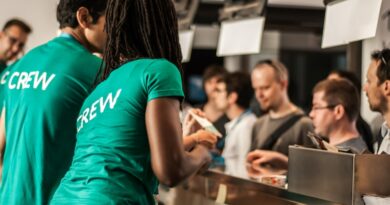Grupo Maggi Company Executive Summary
Grupo Maggi was founded in 1970s by Andre Maggi who is Blairo’s father. The firm grew from a small farming operation to be the largest producer of Soya beans in the world. The Maggi family members improved their services from time to time by proper management of the firm with executive staff members, although the ownership of the firm was retained to the family members. These family members held influential positions in the board of directors of the company.
The group grew and competed steadily among its competitors regardless of the challenges and the discouragements that they encountered. Magi established its own waterways, highways and railways that enabled transportation of raw materials from farms as well as transportation of finished goods to the market. The firm also established its own seed production, farming operations as well as crushing and storage facilities that enabled it to expand its services. By 2002, the firm had developed its services so much, it had diversified its customers both locally and globally and it was in a position to hedge into international future markets.
The Successes of the Company
Grupo Maggi has succeeded due to various reasons like, not listening to the discouragements from its competitors. For instance, when some of its competitors tried to convince Blairo Maggi that no one could see profits being made from the shipping grain that was down the Amazon and it was grown about 100 miles to the south, Blairo went ahead to build the waterway from the Madeira river that passed through from Rondania to Itacoatiara in the jungle of Amazon. The final results of the waterway proved his discouragers wrong. The group reaped abundantly; for example, during the first year, the 317,000 tons of beans produced made a mile journey of 1600. The state of Rondania, state of Mato Grosso to Porto Vellho and Sapezal fields made seven hundred miles by truck that enabled the loading of barges. Later, another 800 miles by barge convoy were shipped on the river of Amazon from the river of Madeira to Itacoatiara city. This ocean port in Itacoatiara was a multimodal one that enabled the loading of vessels that traveled to the continents of Europe and Asia. Later in 2002, about 1.5 million tons of beans were moved down the river. They were taken to the southwards of Mato Grosso by rail and then to the port of Santos through the second route.
Competencies Developed by the Company
The group had been operating on a small farming operation that was started by Blairo’s father who was called Andre Maggi in the 1970s. This group grew steadily to be the largest Soya bean producer of the world. Grupo Maggi was among many other companies of the world that were vertically integrated in the chain of soybean value added. As days went by, the group family changed their management of the company into a team of executives but the ownership was fully retained that was responsible and held the influential positions of the board of directors of the company.
By the year 2002, the group dominated and managed all the company’s operations that included the production of seeds, farming operations and even the facilities of storage and crushing. The only activity that the group did not own was one of the rented facilities. By then, the company had built the waterway of its own and in addition it owned the barges that it used to carry its produce to the port of its own. In addition, the group owned a hydroelectric power facility on Sapezal that had 10-megawatt. This hydroelectric plant supplied power to the firm’s facilities of crushing, storage and port in the town of Sapezal.
The Company’s Competitive Advantages
By the end of 2002, the Maggi’s production of soybeans and financing activities added up to 2.3 million tons; which is more than 1% of the world’s cumulative production. 400,000 tons of soybeans were grown on the group’s own land and financed more tons worth 1.9 million. Those farmers financed by Grupo Maggi enjoyed loans that came in form of raw materials like seeds and fertilizers, which later repaid the firm in terms of soybeans. The group also equipped its producers with market information that was up to date in terms of the new technology and how to apply it, together with consultation services from the farmers who needed clarification of some aspects. The group ensured it established strong face to face relationships with its producers; which led to effective and efficient cultivation methods of soybeans that led to abundant harvest of the Soya beans. The farmers felt as part of the firm and they became free to ask for anything they required from them. These are some of the competitive advantages that the company used over its competitors. Most of the firm’s competitors were not in a position to offer these services to its producers and for those who could, they felt it was not safe to do so as they could incur losses. The advantages proved to be sustainable because it made the group beat its competitors. These competitive advantages over the other firms are some of the contributing factors that saw the Maggi group become the top most Soya bean producer firm in the world because the farmers developed more trust in the firm and felt secure working with it unlike the other Soya bean producing firms.
The firm engaged in business of crushing in 2001 with two facilities. The first one had a crashing capacity of 2.0 tons per day and it had been built by the company while the second one was rented and it had a crashing capacity of 1.5 tons per day. These two facilities ran all year round at the fullest capacity. The group’s initiative of having its own crashing capacity enabled it to expand its customer base that included the large multinational commodity handlers and processor as well as direct end users. The initiative also allowed the group to have diversified buyers globally.
Through the forward integration methods, the group could allow the firm to deliver its produce to international customers free on board. As a result, the firm could hedge its production to international future markets like the Chicago Board of Trade.
Some clients around the world and more especially from Europe preferred products from Brazil because it produced genetically modified free products. Although the government had illegalized GM crops in the early 1990s, there was still a strong black market for GM seeds near Argentine border that was in the southward of Brazil. By 2003, the market was experiencing difficulties in penetrating towards the north to Mato Grosso that challenged the market from moving forward.
The Firm’s Regulatory Restrictions and Changes to the Regulatory Framework
As for the case of Maggi, it produced its own seeds that were GM free for the purposes of its production activities, although it could do less to control the contaminated seeds used by the financing partners. However, the company spent sleepless nights to look for ways of maintaining its standards and even improving them more. The group engaged in a debate that could prevent possible contamination of the group’s produce. The quality issues were also focusing on the future of the firm. The firm came to a solution of establishing its own department that would implement means that could enable production of food quality practices. The firm introduced clauses in all its financial agreements to ensure that its producers abide by the set rules and regulations and the stipulated standards of their operations.
The group always enjoyed staying a step a head of its competitors despite the stiff competition that was coming from its followers. Maggi’s focus was and remained to be that, to maintain the 18% share of market of Mato Grosso as a whole from that of Grupo Maggi in particular. His target was to develop Mato Grosso to top in the region and globally as the largest agricultural producer. He intended to increase the agricultural produce of the firm from 17 to 47 million tons within duration of ten years.
Some of the major challenges that the company was experiencing are logistics. Mato Grosso was located deep in the interior of Brazil that was very far from the nearest port. The transportation infrastructure was poorly maintained, there was no access to rural areas where some of the finished products could get ready market, among others. Although governor Maggi tried to seek funds from the government to improve the region’s network of highways, waterways and railways, the support from the government was very minimal that it did not assist much.
Mato Grosso’s Cerrados were on a high plateau that was between the lost tropical wetland (pantanal) and the Amazon Basin. Much of pantanal environment fell in a region that is under tough legislation of environment that regulated the development of the Amazon Basin.
The two regions were critical parts of Mato Grosso’s waterway infrastructure and the management of the tension between infrastructure development, environmental concerns, and economic was quite a challenge that would only be solved through the combined efforts of governor Maggi and the government.
Conclusion
The Maggi Company is very much dedicated to excel and if it implements the above recommendations and keep the fire burning, it is likely to go far. Otherwise it has achieved a lot that it should not let go.




